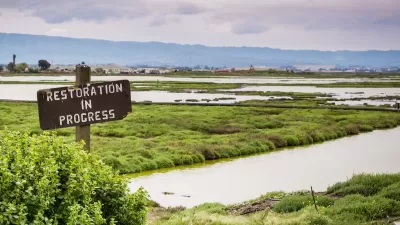The international framework pledges to protect 30 percent of land and water by 2030, but critics say it doesn’t go far enough to address the urgency of biodiversity loss and climate change.

A historic international agreement pledges to protect 30 percent of the earth’s land and water by 2030, reports Hannah Ward-Glenton for CNBC.
The deal, known as the Kunming-Montreal Global Biodiversity Framework, was reached at the United Nations Biodiversity Conference this week (COP15) and includes a promise to raise $200 billion. “Financing for poorer countries will increase to at least $20 billion per year by 2025, according to the agreement, set to increase to $30 billion annually by 2030.”
While the deal is a good start, Alfred DeGemmis, associate director of international policy for the Wildlife Conservation Society, says it should be treated as “a floor, not a ceiling,” indicating that governments must do more than outlined in the framework to achieve meaningful outcomes. According to a press release from the Society, “The Kunming-Montreal Global Biodiversity Framework is a compromise and although it has several very good and hard-fought elements, it could have gone further to truly transform our destructive relationship with nature.”
The article points out that “despite the name, many of the ‘30 by 30’ actions have 2050 as a deadline rather than 2030, which isn’t urgent enough according to the society.”
FULL STORY: Historic biodiversity agreement reached at UN conference

Alabama: Trump Terminates Settlements for Black Communities Harmed By Raw Sewage
Trump deemed the landmark civil rights agreement “illegal DEI and environmental justice policy.”

Study: Maui’s Plan to Convert Vacation Rentals to Long-Term Housing Could Cause Nearly $1 Billion Economic Loss
The plan would reduce visitor accommodation by 25% resulting in 1,900 jobs lost.

Why Should We Subsidize Public Transportation?
Many public transit agencies face financial stress due to rising costs, declining fare revenue, and declining subsidies. Transit advocates must provide a strong business case for increasing public transit funding.

Paris Bike Boom Leads to Steep Drop in Air Pollution
The French city’s air quality has improved dramatically in the past 20 years, coinciding with a growth in cycling.

Why Housing Costs More to Build in California Than in Texas
Hard costs like labor and materials combined with ‘soft’ costs such as permitting make building in the San Francisco Bay Area almost three times as costly as in Texas cities.

San Diego County Sees a Rise in Urban Coyotes
San Diego County experiences a rise in urban coyotes, as sightings become prevalent throughout its urban neighbourhoods and surrounding areas.
Urban Design for Planners 1: Software Tools
This six-course series explores essential urban design concepts using open source software and equips planners with the tools they need to participate fully in the urban design process.
Planning for Universal Design
Learn the tools for implementing Universal Design in planning regulations.
Smith Gee Studio
Alamo Area Metropolitan Planning Organization
City of Santa Clarita
Institute for Housing and Urban Development Studies (IHS)
City of Grandview
Harvard GSD Executive Education
Toledo-Lucas County Plan Commissions
Salt Lake City
NYU Wagner Graduate School of Public Service





























